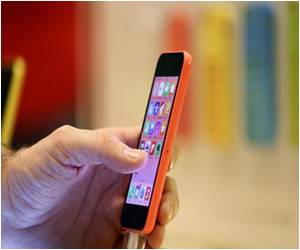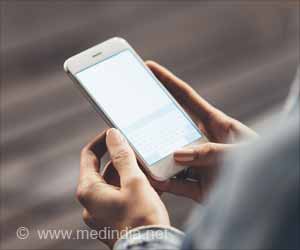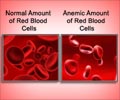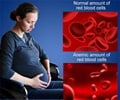A smartphone app has been developed that can diagnose anemia without the need for bleeding. The app measures the hemoglobin levels based on images taken by the smartphone of the fingernail beds of a person.
- A smartphone app has been developed that can estimate hemoglobin levels by analyzing images of a person’s fingernail beds
- This helps to diagnose anemia quickly and accurately, which is at par with lab methods
- Faster hemoglobin estimations will enable patients to self-monitor their condition so that doctors can adjust the medications in a timely manner
Dr. Lam is an Associate Professor of Pediatrics in the Division of Hematology/Oncology at Emory University School of Medicine. He is also attached to the Wallace H. Coulter Department of Biomedical Engineering at the Georgia Institute of Technology and Emory University. Dr. Lam is also a member of the Cancer Cell Biology Research Program at Winship Cancer Institute, USA.
Read More..
What is Anemia?
Anemia, which literally means “lack of blood”, is a medical condition in which the blood doesn’t have enough healthy red blood cells (RBC), resulting in decreased hemoglobin levels. Anemia is the most common blood disorder and currently affects 32 billion people worldwide, of which 3 million are from the USA. The mainstay for the diagnosis of anemia is the complete blood count (CBC), which measures the level of hemoglobin in the blood as well as other parameters. The normal level of hemoglobin in men is 13.5-17.5 g/dl (gram/deciliter), while for women is 12-15.5 g/dl. If the level of hemoglobin falls below these values, anemia occurs.Development of the Smartphone App
The app was developed by Dr. Rob Mannino, PhD, when he was a doctoral student in Biomedical Engineering. His motivation came from the fact that he himself suffers from a serious inherited blood disorder called β-thalassemia caused by a defective β-globin gene.“Treatment for my disease requires monthly blood transfusions,” Mannino says. “My doctors would test my hemoglobin levels more if they could, but it’s a hassle for me to get to the hospital in between transfusions to receive this blood test. Instead, my doctors currently have to just estimate when I’m going to need a transfusion, based on my hemoglobin level trends.”
The app used in the present study has been used for determining hemoglobin levels in the blood.
“This whole project couldn’t have been done by anyone but Rob,” Lam says. “He took pictures of himself before and after transfusions as his hemoglobin levels were changing, which enabled him to constantly refine and tweak his technology on himself in a very efficient manner. So essentially, he was his own perfect initial test subject with each iteration of the app.”
Study Procedure
The research team took photos of the nailbeds on their fingers using their smartphone. The color of the nailbeds was correlated with the hemoglobin concentration in 337 individuals that was measured by CBC. Of the 337 people included in the study, some were healthy while others were anemic. An algorithm was developed for converting the fingernail bed color with the actual blood hemoglobin concentrations estimated in the clinical laboratory. A total of 237 individuals were used to develop this algorithm and was tested in 100 individuals.Study Findings
The app measured the hemoglobin level by analyzing an image taken by the smartphone without personalized calibration. This exhibited an accuracy of 2.4 g/dl and a sensitivity of up to 97 percent. Following personalized calibration in four individuals for several weeks, the accuracy was significantly improved to 0.92 g/dl. This accuracy was well within acceptable limits and highly significant as it was at par with the hemoglobin levels measured at the point-of-care in a hospital setting.Applications of the Technology
The app can be used by any person who can operate a smartphone and will be particularly useful for pregnant women, women experiencing abnormal bleeding during periods, as well as by sportspersons. Importantly, it will be very useful in remote areas, where lab-based diagnostics are scarce.The research team indicates that the technology will be useful for anemic patients to regularly check the levels of hemoglobin using the app. This will help monitor the disease and adjust the medications. Moreover, the app will be useful for informing the doctors when to give a transfusion.
This smartphone app can be used in people from various races having different skin tones, as it is based on images of the fingernail beds, which lack melanin. This ensures uniformity in the images vis-à-vis the quality of the data generated. It is also capable of adjusting the background brightness to generate well-defined and crisp images. Moreover, the app can be adapted for use in smartphones from multiple manufacturers.
Conclusion
The technology, at the present moment, should be used for screening purposes and not for clinical applications. However, with further tweaking and refinements, the researchers are confident that the app could be used in clinical diagnosis and even replace blood tests for estimating hemoglobin.Funding Source
The research was supported by the National Science Foundation (NSF), the 2017 Massachusetts General Hospital Primary Care Technology Prize, and the National Institutes of Health (NIH), USA.Reference:
- Smartphone app for non-invasive detection of anemia using only patient-sourced photos - (http://dx.doi.org/10.1038/s41467-018-07262-2 )
Source-Medindia
















